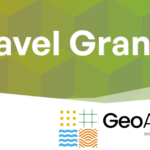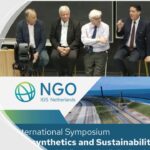Dear IGS Colleagues,
I hope this message finds you well as we have passed the mid-year point of 2024.
It’s been good to see the rhythm of IGS events firmly re-established. Already this year, IGS North America hosted a fantastic 5th GeoAmericas conference in Toronto, with over 700 participants and 70 exhibitors from 46 countries. In addition to the well-chosen technical focus on ‘Connecting state of the art to state of practice’, the conference introduced several innovations including a plenary ‘GeoJeopardy’ quiz for IGS student members, a fascinating plenary session on how we can embrace diversity to drive innovation and leverage talent, and a dedicated session on climate change and geosynthetics. It was also encouraging to see engineering practitioners well-represented amongst the keynotes. While at Toronto we welcomed several new IGS Council members, met the leadership of our Pan American Chapters, agreed to establish our newest Chapter, in Guatemala, and selected our Colombian Chapter to host the 6th GeoAmericas in 2028.
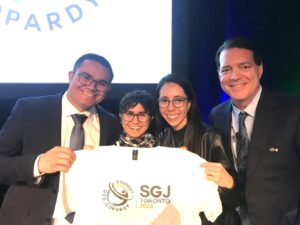
As I write this message, I have just returned from a successful 2nd GEOANZ conference in Melbourne, with a focus on key issues of societal concern including mining, environmental containment, and sustainability. It’s great to see the team in Australia and New Zealand in action as they prepare to host GeoAsia 8 in Brisbane, in just eleven months’ time.
Last month I had the pleasure to attend an excellent joint workshop organised by our Hydraulics and Reinforcement TCs in Barcelona on the theme of reinforcement and drainage in soil structures. In May, our Reinforcement TC ran a workshop at the GeoShanghai conference and the Stabilisation TC is working on plans for a workshop in Hyderabad, India in October.
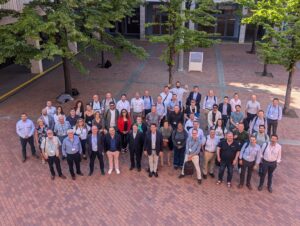
While we have an active program of IGS events, I’ve been working to make our voice heard beyond our established audiences. Earlier this month I was a guest speaker at the Global Energy Transition Congress in Milan, where I had the opportunity to introduce geosynthetics to global leaders whose industries can benefit enormously from geosynthetics, but who have not previously heard of them. These opportunities to share our geosynthetics message to those related partners in the cause for a more sustainable future are key for our growing industry, and we are committed to leveraging them as often as possible.

Many of our IGS members are also actively involved in key standards bodies, working in particular with the European Committee for Standardization (CEN) across various working groups relating to leaching, environmental performance, circular economy and microplastics, and with the American Society for Testing and Materials (ASTM) on sampling practice for microplastic measurements and on a guide for carbon calculations, which will take advantage of the effort we have put into the IGS Sustainability Benefits Calculator. With strong IGS support, the possibility of new jointly published standards by ISO and ASTM International will serve our industry very well.
I have also been working to coordinate efforts with our industry lobbying groups including EAGM, GMA and ABINT. This was initiated in Rome at the 12th ICG and has continued with a joint cooperation agreement with the North American Geosynthetic Materials Association. We are all interested in maximizing our effectiveness by not creating redundant efforts and instead, working together to progress our industry serving the functions we are each uniquely able to.
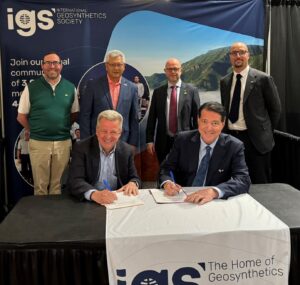
I want to say big “thank you” to the leadership of all our Chapters for responding to our Chapter Survey. We received full responses from almost every Chapter and this has been enormously helpful in providing a global picture of how our Chapters are delivering for Members, which we presented to the IGS Council at their recent meeting in Toronto. Since then we have discussed the findings in more detail with Regional Chairs. Your Vice President, Edoardo Zannoni is leading an exercise to contact Chapters to share the findings and discuss how we can provide further support to you.
Work continues at pace to develop the inaugural IGS Geosynthetics Handbook. We have completed a review of the first draft and aim to publish in early 2025. It will include an introduction to geosynthetics, with chapters devoted to specific applications. The Handbook will augment the very important IGS application-based professional development short courses.
It’s been great to see that with Member support, we are building up our library of corporate case studies and sustainability case studies. These are an ideal way to share good practice within our community and to showcase the benefits of geosynthetics to others. I encourage all Corporate Members to continue to submit case studies as well as your Corporate profiles.
Importantly, with the leadership of our IGS Treasurer, Dr. Jie Han, and the wisdom and courage of the 12th ICG general assembly delegates, the IGS has successfully turned the page on a 40-year fiscal policy that no longer served us, and today sits in a healthier financial condition. Member resources are being used to educate, provide outreach and expand our markets.
I am so very grateful for the support of all our individual and corporate members that continue to sustain and grow our Society.
In our IGS, it’s onward and upward!
Yours in Service,
Samuel (Sam) Allen
President
International Geosynthetics Society



